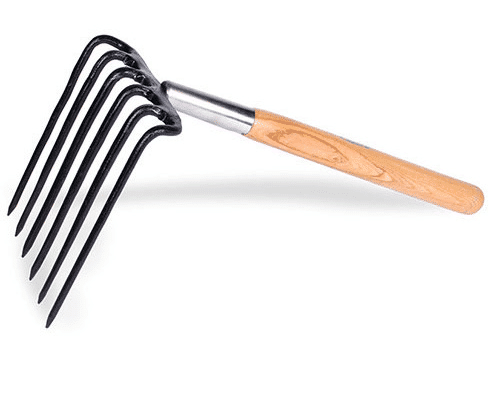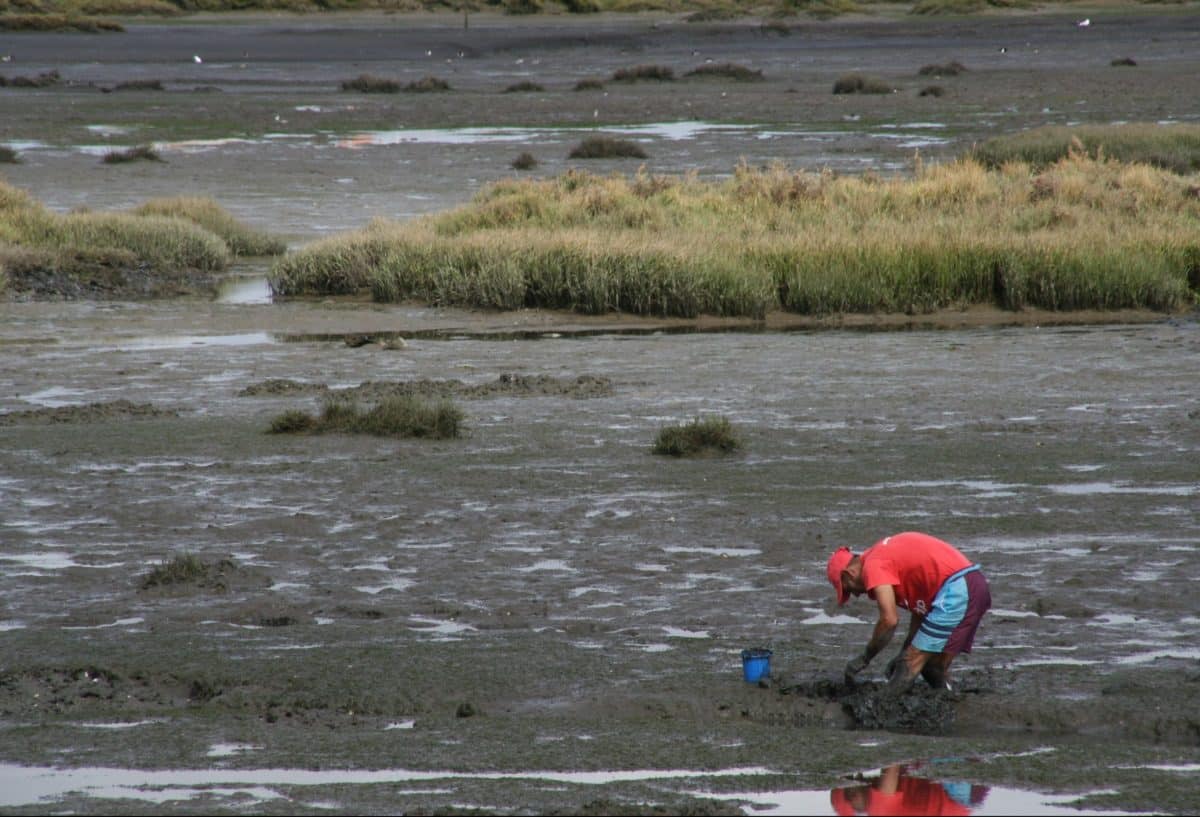When I was a kid spending summers on the coast of Maine, digging for soft-shelled clams, or “steamers,” was one of our entertainments, just like going to the beach, exploring the woods, or flounder fishing from our rowboat. The clam flats were about a half mile walk through the woods, so even the journey to get there was fun.
Just to clarify, steamers (Mya arenaria) are not the hard-shelled clams that come in a variety of shapes and sizes, like small littlenecks and cherrystones served on the half shell and in dishes like classic Italian linguini vongole. Larger hard-shelled clams like quahogs and surf clams are favored for fritters and “stuffies,”as baked stuffed clams are known in Rhode Island. Soft-shelled clams are traditionally steamed, and play a strong supporting role in any self-respecting New England lobster dinner or clambake. (Razor clams are also soft shelled; though they are prized in Europe, we have yet to develop much of a taste for them in the United States.)
We had a clam fork (which I still have, in fact) and we dug down six inches (15 cm) or more, gently turning up the gray sand and mud, and searched through by hand for clams that were not too big, not too small. We dropped the soft-shelled bivalves into a bucket of seawater to rinse them. We drained them before the trek home through the woods, brought them home, rinsed them several times more, and soaked them for an hour or so to remove any remaining sand. They were steamed briefly, just until they opened. Later, I learned to add cornmeal to the soaking water to encourage the clams to expel any remaining grit.
At the table, there were cups of the clam broth next to small dishes of melted butter. Removing the dark sleeve that covers the clam’s siphon, we grabbed the neck of the clam, swished and swirled it in the broth to remove any lingering sand, and dipped the steamers into the butter. Then, like an ancient Roman eating grapes, we hoisted these morsels into our watering mouths.
Many years later – as permanent Maine residents, not just “summer folk” – my husband and I enthusiastically (okay, I was the more enthusiastic one) got a clam license from Town Hall, permits being a measure to limit the number of people harvesting and the quantity of clams taken, and thus conserve the resource. We waited for a favorable tide on a Saturday when the license was valid.
My husband had fashioned a “hod” for us, a sort of basket shaped like a toolbox with carrying handles, and sides and bottom made of wire mesh so the wet clams could drain. I loved using the old clam fork, but a flat-tined hay rake works well too. The trick is to carefully dig underneath the clams, and then pick through gently to be sure you end up with as many whole clams as possible. Each clam must meet a minimum length to be taken; in our town they must be at least two and a half inches (6.3 cm) long.
We told ourselves that it must have been due to a reduced clam population (but I suspect it was more a matter of our middle-aged bodies) that we found this back-aching work. While clam diggers not far from us on the flats were raking up steamers by the dozens, we rarely seemed to get more than a few handfuls of unbroken clams. We enlisted the help of our godchildren, then about nine and twelve, who improved our haul considerably.
So we came home with fewer clams than we did when we were kids, but the joy of collecting our own food, almost from our own back yard, made our steamers even more prized and delicious.
The process of harvesting remains more or less unchanged. Look for a concentration of air holes in the sand or mud indicating that there are clams below. Old-time clammers have their favorite spots on any flat, and could no doubt tell you how to spot the greatest concentration of clams (but they probably won’t). Stepping on a concentration of clams under the mud or sand might get you a squirt of seawater from the clams’ siphons, another tip that your treasure is underfoot.
Local ordinances ensure that clams are taken when the seawater is wholesome and free of toxins. Paralytic shellfish poisoning, known as “red tide,” is a concern particularly in warmer months and after heavy rains, when run-off from the land can contaminate the clam flats. A call to your town offices or Fish and Wildlife office will let you know whether it’s safe to dig. ![]()

First published June 2016
